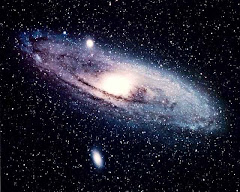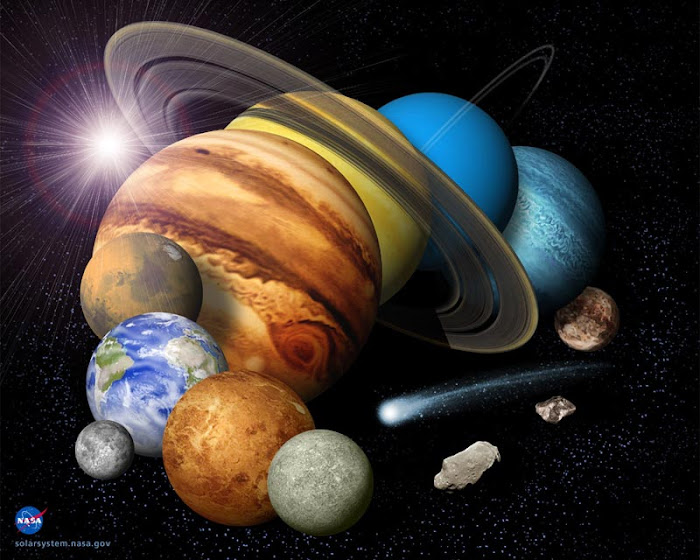Thursday, July 17, 2008
Who invented the telescope?
Georges Lemaître
 Scientific research shows that the universe has been expanding at an accelerating rate; this is said to be due to the dark energy that makes up some 70 percent of the total energy density of today's universe. This discovery further bears out the big bang theory, which had been first proposed by astrophysicist and cosmologist Georges Lemaître in 1927. LeMaître, who was born on this date in 1894, stated that the universe began some 20 billion years ago with the violent explosion of a small mass of matter at extremely high density and temperature.
Scientific research shows that the universe has been expanding at an accelerating rate; this is said to be due to the dark energy that makes up some 70 percent of the total energy density of today's universe. This discovery further bears out the big bang theory, which had been first proposed by astrophysicist and cosmologist Georges Lemaître in 1927. LeMaître, who was born on this date in 1894, stated that the universe began some 20 billion years ago with the violent explosion of a small mass of matter at extremely high density and temperature.
Georges Henri Joseph Éduard Lemaître (July 17, 1894 – June 20, 1966) was a Belgian Roman Catholic priest, honorary prelate, professor of physics and astronomer at the Université catholique de Louvain.
Lemaître proposed what became known as the Big Bang theory of the origin of the Universe, which he called his 'hypothesis of the primeval atom'.
After studying humanities at a Jesuit school (Collège du Sacré-Coeur, Charleroi), Lemaître entered the civil engineering school of the Catholic University of Leuven at the age of seventeen. In 1914, at the beginning of World War I, he paused his studies to engage as a volunteer in the Belgian army. At the end of hostilities, he received the Military Cross with palms.
After the war, he undertook studies in physics and mathematics and began to prepare for priesthood. He obtained his doctorate in 1920 with a thesis entitled l'Approximation des fonctions de plusieurs variables réelles (Approximation of functions of several real variables), written under the direction of Charles de la Vallée-Poussin. He was ordained a priest in 1923.
In 1923, he became a graduate student in astronomy at the University of Cambridge, spending one year at St Edmund's House (now St Edmund's College, Cambridge). He worked with the astronomer Arthur Eddington who initiated him into modern cosmology, stellar astronomy and numerical analysis. He spent the following year at Harvard College Observatory in Cambridge, Massachusetts with Harlow Shapley, who had just gained a name for his work on nebulae, and at the Massachusetts Institute of Technology, where he registered for the doctorate in sciences.
On March 17, 1934, Lemaître received the Francqui Prize, the highest Belgian scientific distinction, from King Léopold III. His proposers were Albert Einstein, Charles de la Vallée-Poussin and Alexandre de Hemptinne. The members of the international jury were Eddington, Langevin and Théophile de Donder. Another distinction that the Belgian government reserves for exceptional scientists was allotted to him in 1950: the decennial prize for applied sciences for the period 1933-1942.
In 1936, he was elected member of the Pontifical Academy of Sciences.
In 1941, he was elected member of the Royal Academy of Sciences and Arts of Belgium.
In 1946, he published his book on L'Hypothèse de l'Atome Primitif (The Primeval Atom Hypothesis), a book which would be translated into Spanish in the same year and into English in 1950.
In 1953 he was given the very first Eddington Medal award of the Royal Astronomical Society.
During the 1950s, he gradually gave up part of his teaching workload, ending it completely with his éméritat in 1964.
At the end of his life, he was devoted more and more to numerical calculation. He was in fact a remarkable algebraicist and arithmetical calculator. Since 1930, he used the most powerful calculating machines of the time like the Mercedes. In 1958, he introduced at the University a Burroughs E 101, the University's first electronic computer. Lemaître kept a strong interest in the development of computers and, even more, in the problems of language and programming. With age, this interest grew until it absorbed him almost completely.
He died on June 20, 1966 shortly after having learned of the discovery of cosmic microwave background radiation, proof of his intuitions about the birth of the Universe.












